Hello! The real estate market continues to demonstrate its natural ebb and flow. Despite an increase in inventory and longer average days on market, the average selling price has risen by 2% over the past 12 months. While recent rate cuts are welcomed, they haven't yet significantly boosted activity among new home buyers. Given the seasonal slowdown typical for this time of year, many prospective buyers I’ve spoken with are choosing to wait and explore options in the spring, particularly with additional rate cuts anticipated in the new year.
October 2024 Market Update: Single-Family Homes in the Cowichan Valley
Sales Activity: A total of 62 single-family homes were sold in the Cowichan Valley during October 2024, marking a notable increase from 33 homes sold in October 2023 and down just one from 63 homes in September 2024.
Listings & Inventory:
The market saw 95 new single-family home listings in October, a significant jump of 20% compared to 79 listings in October of last year. As of the end of October, 296 homes were actively listed, up considerably from 196 homes available at the same time last year.
Pricing Trends:
• The average sale price in October 2024 was $776,391, reflecting no change from October 2023’s average of $776,894.
• Compared to September 2024‘s average of $787,809, prices have softened slightly.
• For the 12-month period ending in October 2024, the median sale price stood at $784,000.
Annual Performance: Over the past 12 months, 639 single-family homes were sold, which represents a 6% decline compared to the 680 sales in the same period ending in October 2023. Despite the slower pace of sales, the average selling price for the year is up by 2%.
• The average sale price in October 2024 was $776,391, reflecting no change from October 2023’s average of $776,894.
• Compared to September 2024‘s average of $787,809, prices have softened slightly.
• For the 12-month period ending in October 2024, the median sale price stood at $784,000.
Annual Performance: Over the past 12 months, 639 single-family homes were sold, which represents a 6% decline compared to the 680 sales in the same period ending in October 2023. Despite the slower pace of sales, the average selling price for the year is up by 2%.
Market Supply & Days on Market:
• The supply of homes decreased to 5.5 months in October 2024, down from 6.9 months in October 2023, indicating a gradual shift toward a more balanced market.
• Homes sold in October 2024 took an average of 54 days to sell, compared to 53 days in October last year.
This summary highlights the key market trends and performance for single-family homes in the Cowichan Valley, helping homeowners and buyers stay informed about the latest developments. Feel free to reach out for further details or if you need personalized advice!
• The supply of homes decreased to 5.5 months in October 2024, down from 6.9 months in October 2023, indicating a gradual shift toward a more balanced market.
• Homes sold in October 2024 took an average of 54 days to sell, compared to 53 days in October last year.
This summary highlights the key market trends and performance for single-family homes in the Cowichan Valley, helping homeowners and buyers stay informed about the latest developments. Feel free to reach out for further details or if you need personalized advice!
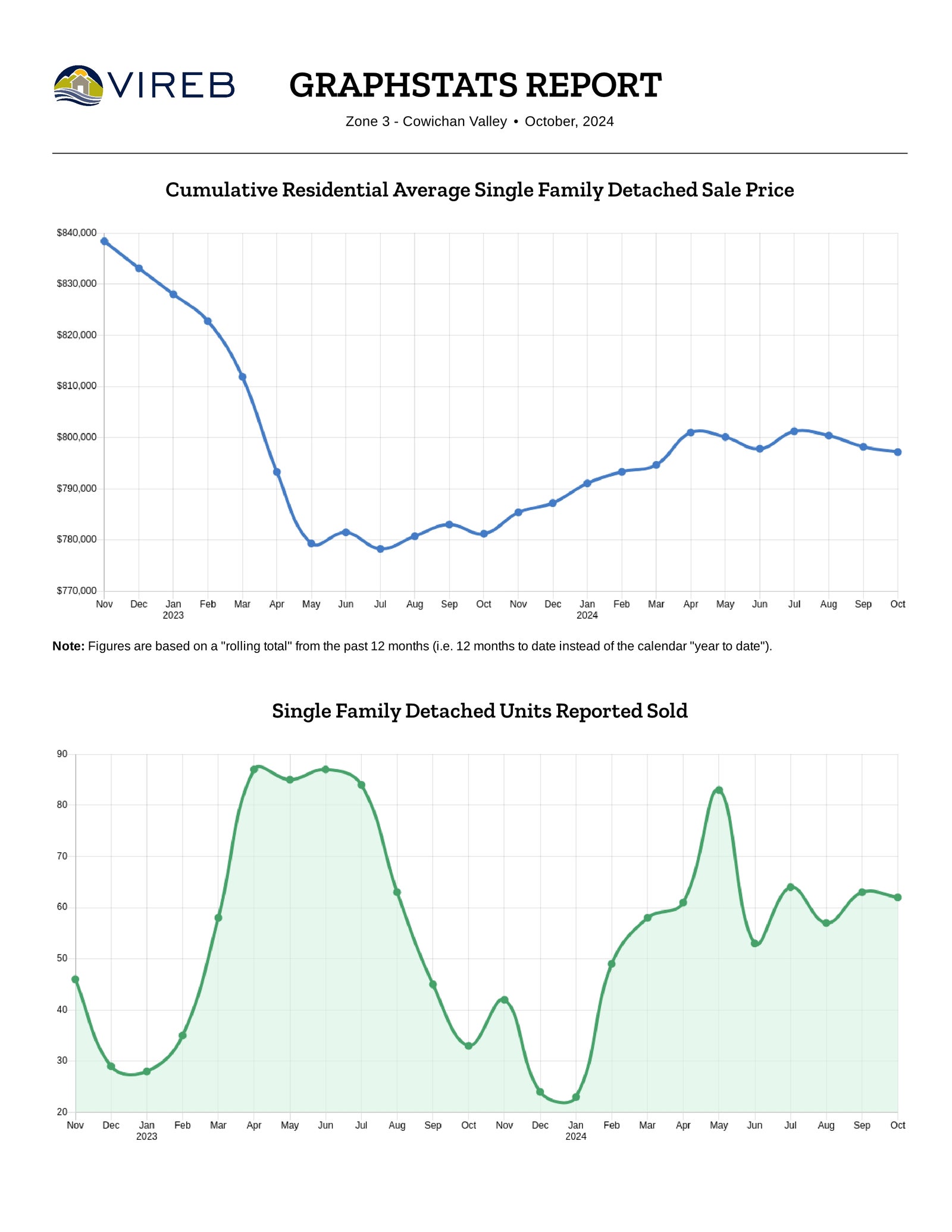
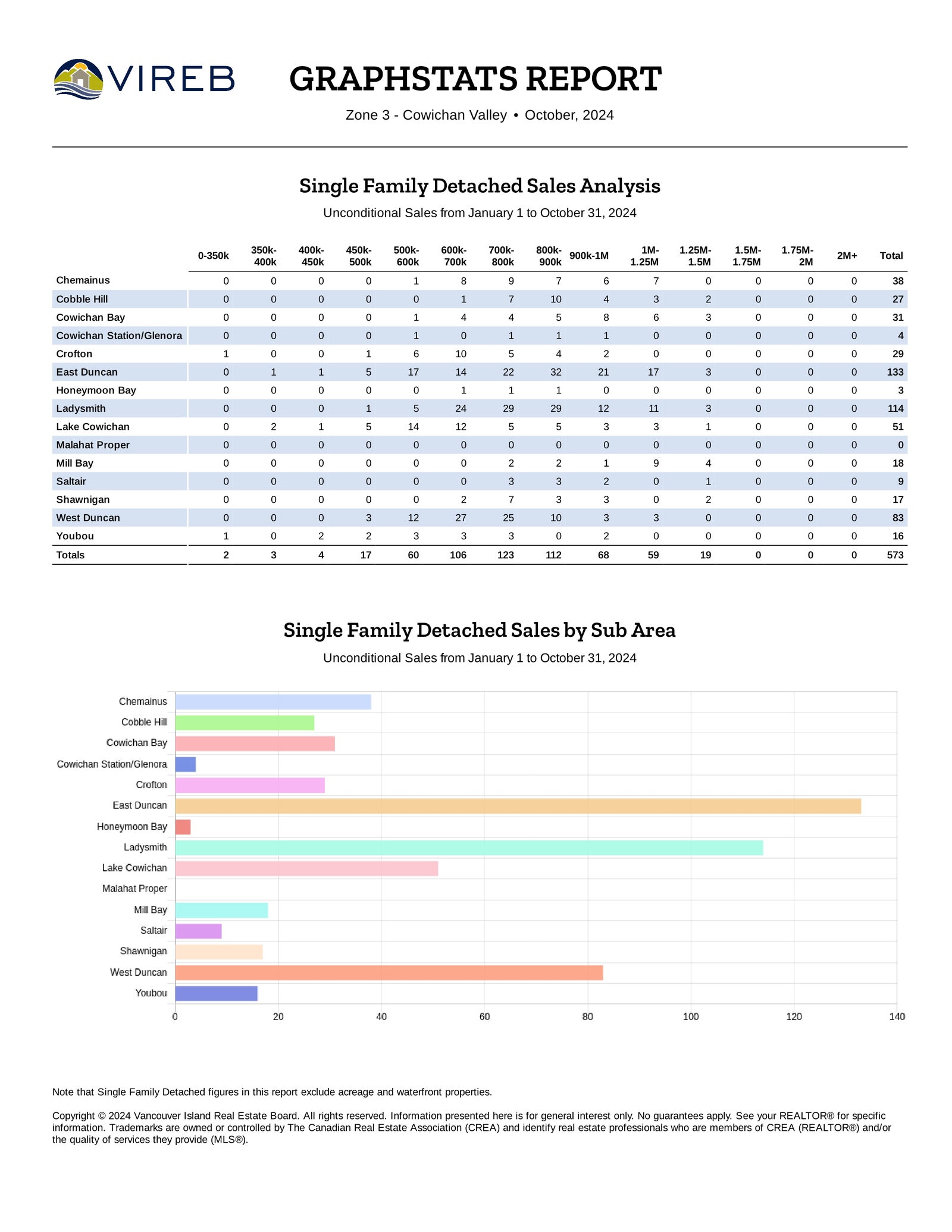

Condo & Townhome Market Update
Condominiums
In October, the condominium market saw a slight decrease with 8 units sold, compared to 9 in September. However, sales are up from the 5 units sold in October of last year. The average price for condo apartments over the past 12 months ending in October 2024 rose to $349,065—a 5% increase from last year's average of $333,263.
Townhomes
The townhome market experienced an upward trend, with 17 sales in September, an increase from both the 13 units sold in September and 9 in October 2023 (a 90% year-over-year increase). The average price for townhomes over the past 12 months ending in October reached $568,823, up 2% from $559,548 during the same period last year.
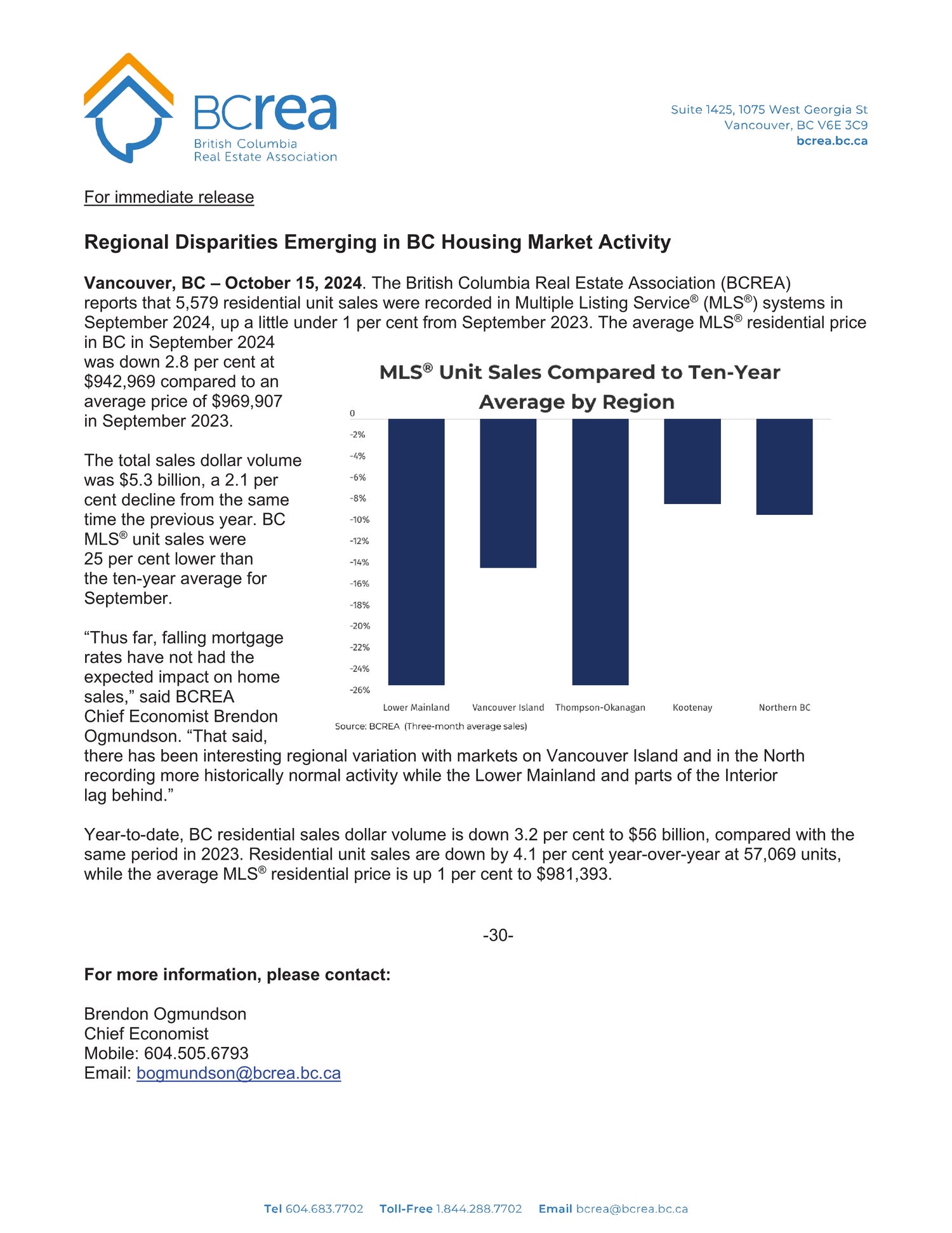

Bank of Canada reduces policy rate by 50 basis points to 3¾%
FOR IMMEDIATE RELEASE
Media Relations
Ottawa, Ontario
October 23, 2024
The Bank of Canada today reduced its target for the overnight rate to 3¾%, with the Bank Rate at 4% and the deposit rate at 3¾%. The Bank is continuing its policy of balance sheet normalization.
The Bank continues to expect the global economy to expand at a rate of about 3% over the next two years. Growth in the United States is now expected to be stronger than previously forecast while the outlook for China remains subdued. Growth in the euro area has been soft but should recover modestly next year. Inflation in advanced economies has declined in recent months, and is now around central bank targets. Global financial conditions have eased since July, in part because of market expectations of lower policy interest rates. Global oil prices are about $10 lower than assumed in the July Monetary Policy Report (MPR).
In Canada, the economy grew at around 2% in the first half of the year and we expect growth of 1¾% in the second half. Consumption has continued to grow but is declining on a per person basis. Exports have been boosted by the opening of the Trans Mountain Expansion pipeline. The labour market remains soft—the unemployment rate was at 6.5% in September. Population growth has continued to expand the labour force while hiring has been modest. This has particularly affected young people and newcomers to Canada. Wage growth remains elevated relative to productivity growth. Overall, the economy continues to be in excess supply.
GDP growth is forecast to strengthen gradually over the projection horizon, supported by lower interest rates. This forecast largely reflects the net effect of a gradual pick up in consumer spending per person and slower population growth. Residential investment growth is also projected to rise as strong demand for housing lifts sales and spending on renovations. Business investment is expected to strengthen as demand picks up, and exports should remain strong, supported by robust demand from the United States.
Overall, the Bank forecasts GDP growth of 1.2% in 2024, 2.1% in 2025, and 2.3% in 2026. As the economy strengthens, excess supply is gradually absorbed.
CPI inflation has declined significantly from 2.7% in June to 1.6% in September. Inflation in shelter costs remains elevated but has begun to ease. Excess supply elsewhere in the economy has reduced inflation in the prices of many goods and services. The drop in global oil prices has led to lower gasoline prices. These factors have all combined to bring inflation down. The Bank’s preferred measures of core inflation are now below 2½%. With inflationary pressures no longer broad-based, business and consumer inflation expectations have largely normalized.
The Bank expects inflation to remain close to the target over the projection horizon, with the upward and downward pressures on inflation roughly balancing out. The upward pressure from shelter and other services gradually diminishes, and the downward pressure on inflation recedes as excess supply in the economy is absorbed.
With inflation now back around the 2% target, Governing Council decided to reduce the policy rate by 50 basis points to support economic growth and keep inflation close to the middle of the 1% to 3% range. If the economy evolves broadly in line with our latest forecast, we expect to reduce the policy rate further. However, the timing and pace of further reductions in the policy rate will be guided by incoming information and our assessment of its implications for the inflation outlook. We will take decisions one meeting at a time. The Bank is committed to maintaining price stability for Canadians by keeping inflation close to the 2% target.
Information note:
The next scheduled date for announcing the overnight rate target is December 11, 2024. The Bank will publish its next full outlook for the economy and inflation, including risks to the projection, in the MPR on January 29, 2025.
The next scheduled date for announcing the overnight rate target is December 11, 2024. The Bank will publish its next full outlook for the economy and inflation, including risks to the projection, in the MPR on January 29, 2025.

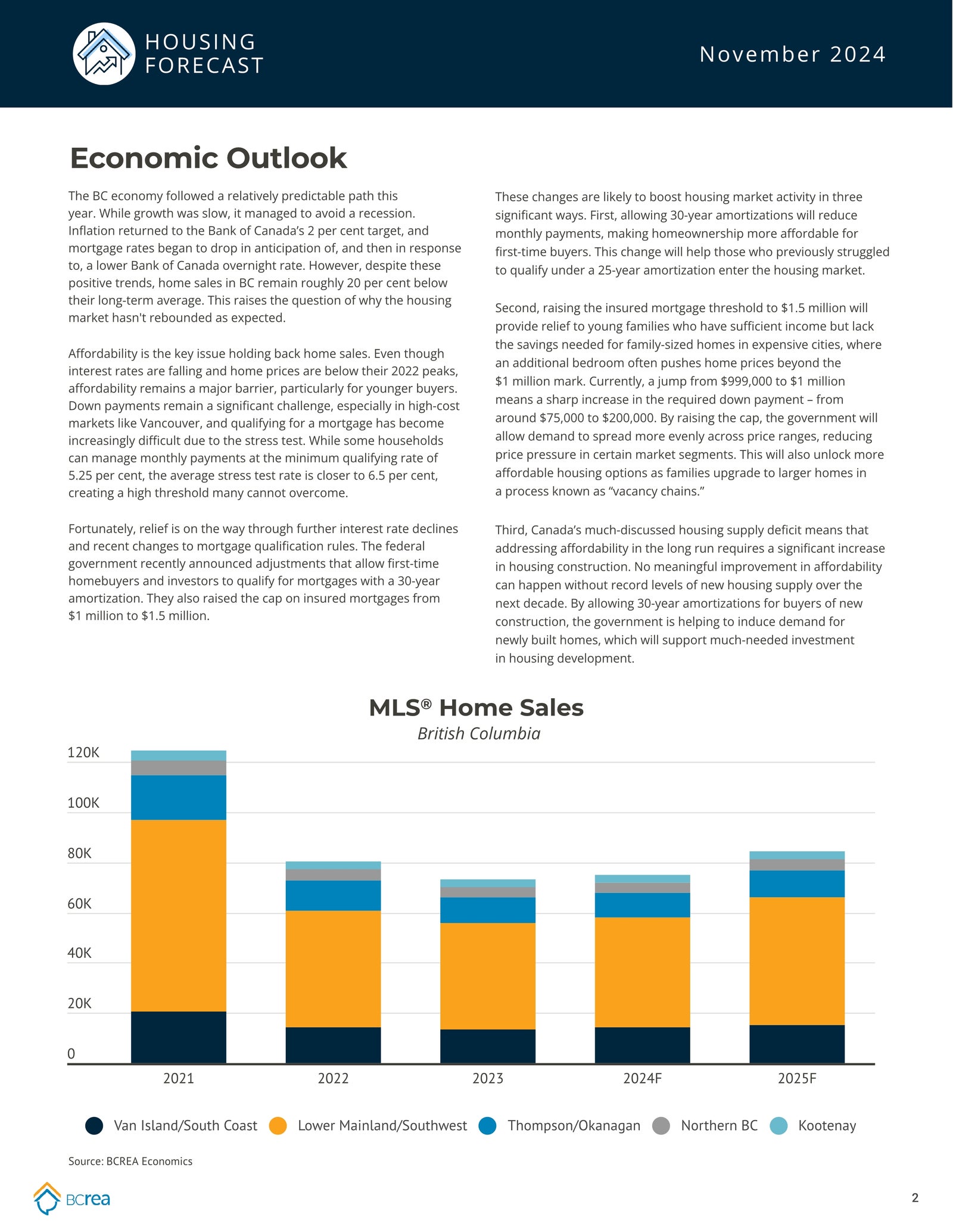
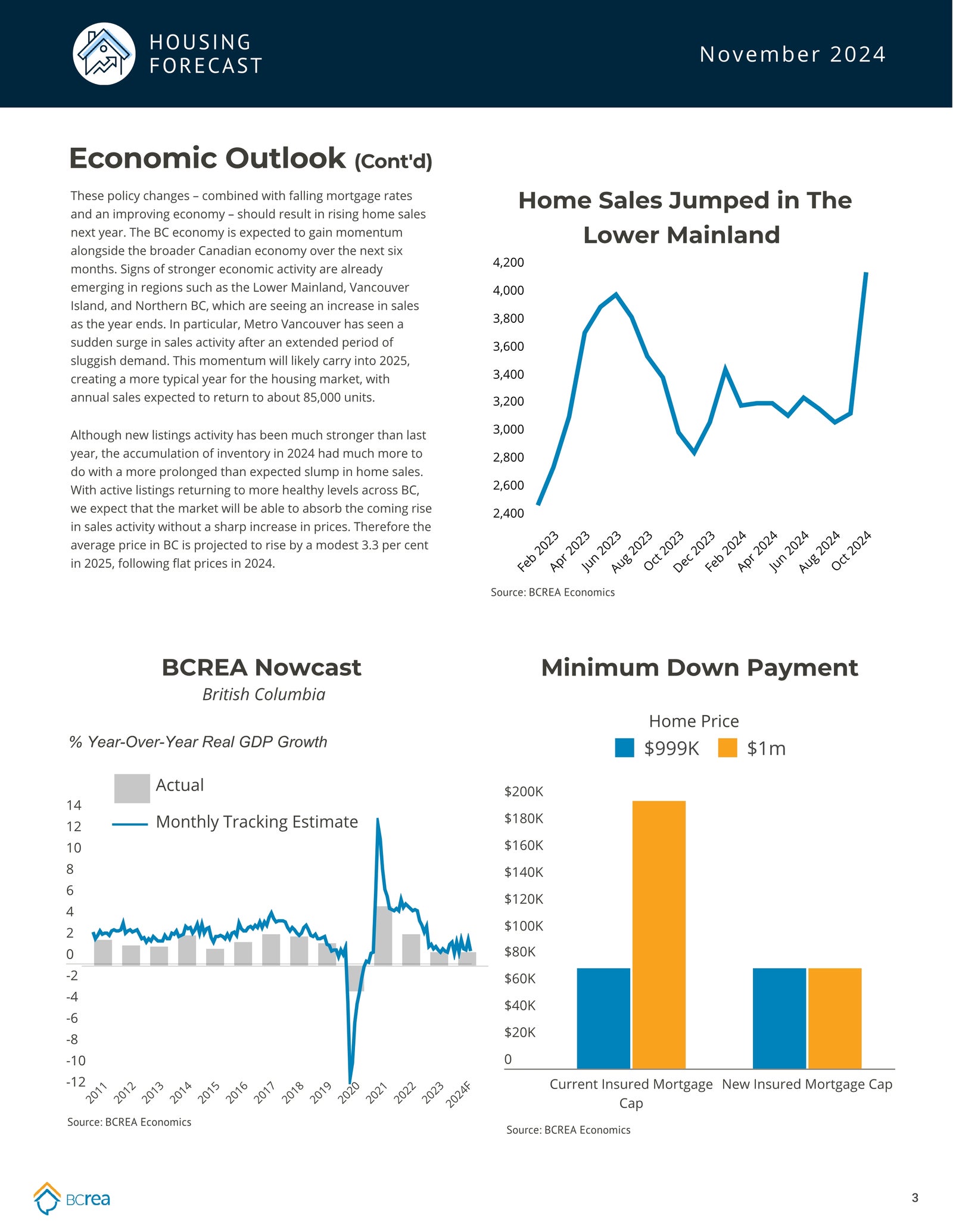
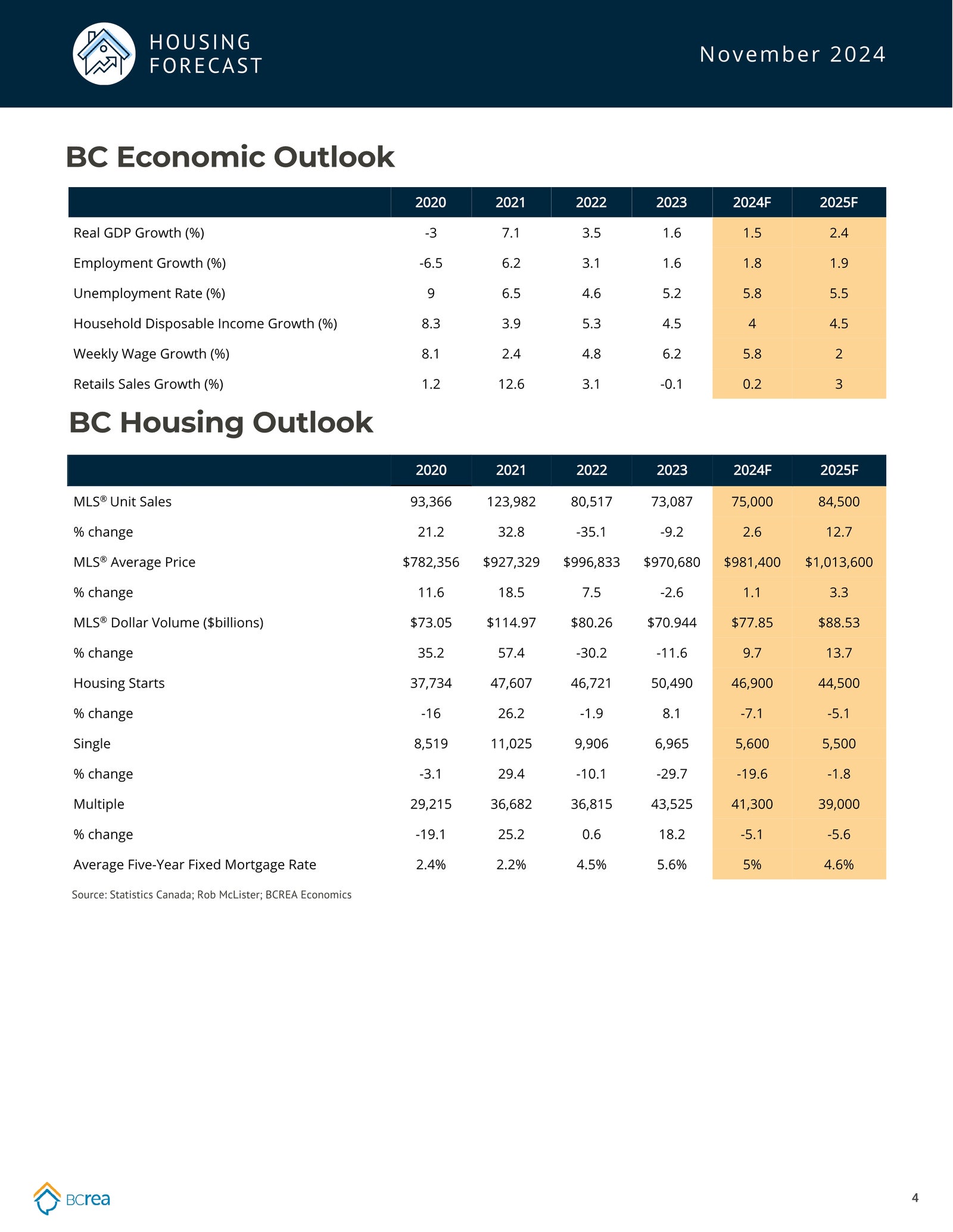
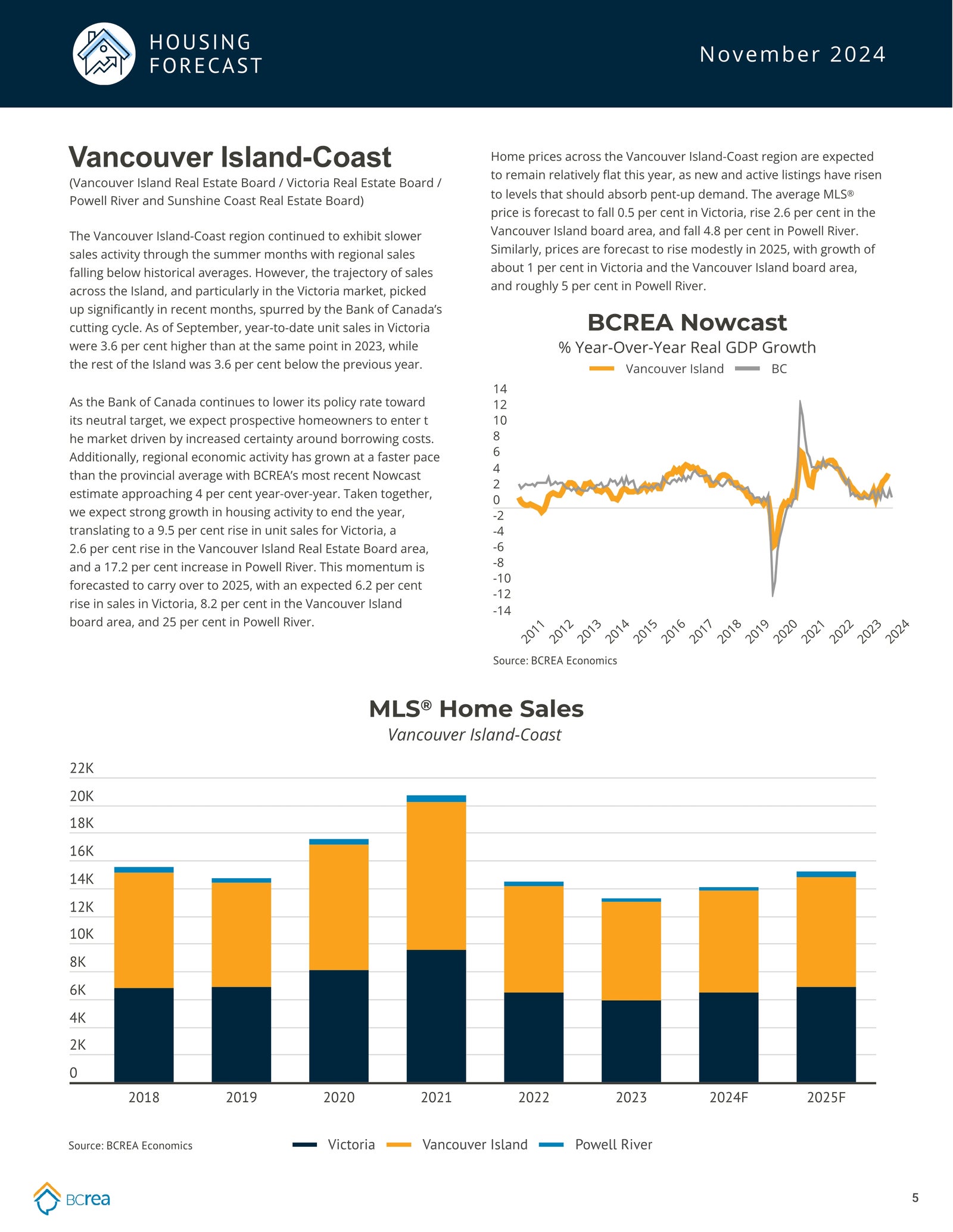
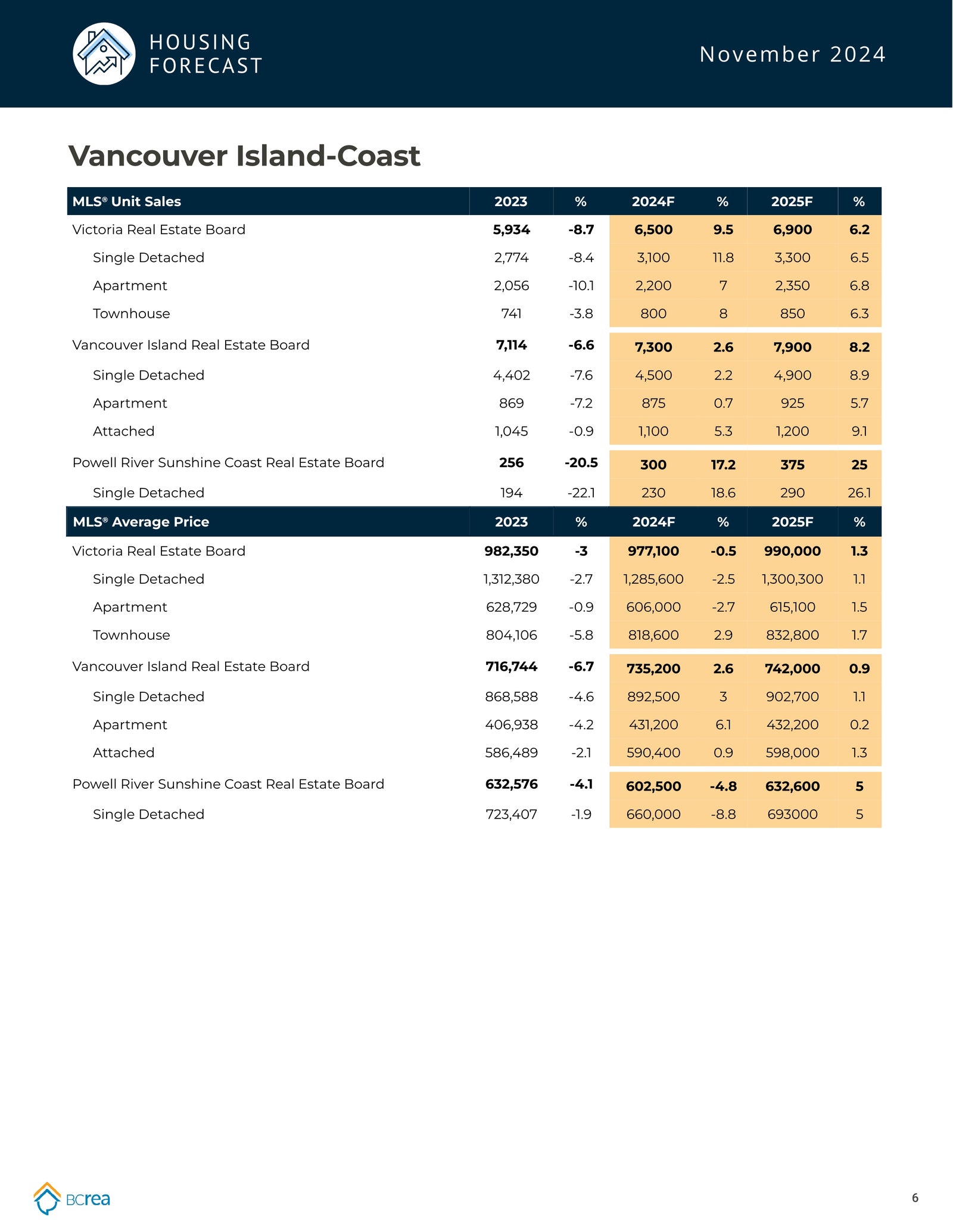
For the complete news release from BCREA, including detailed statistics, click here.


